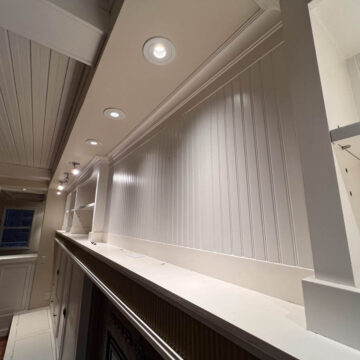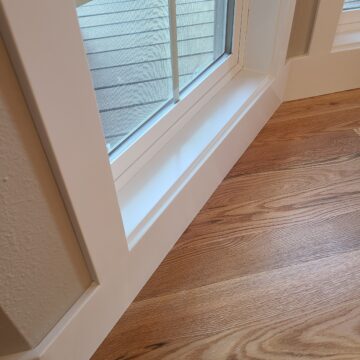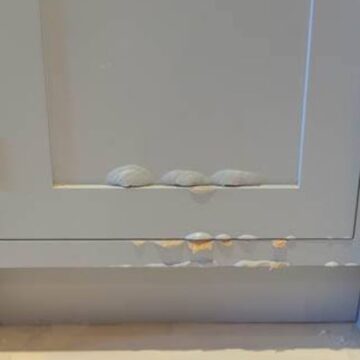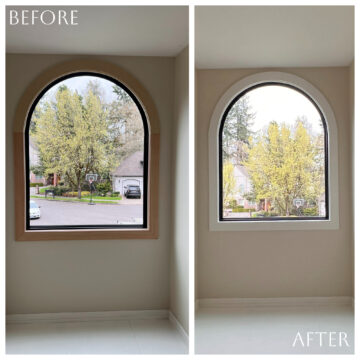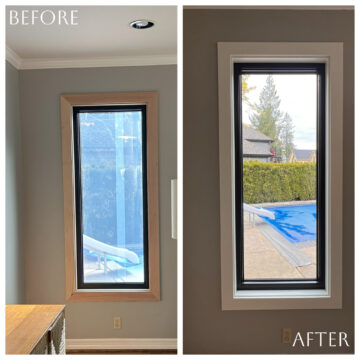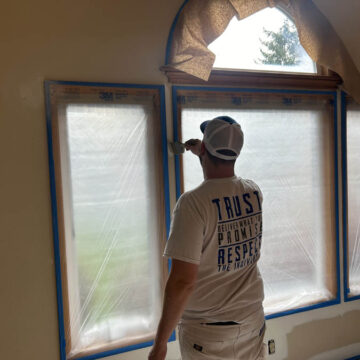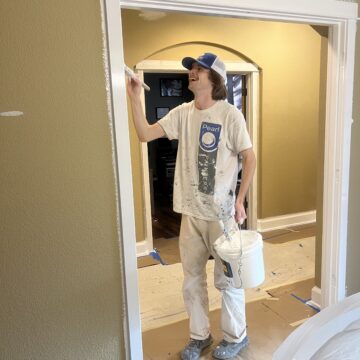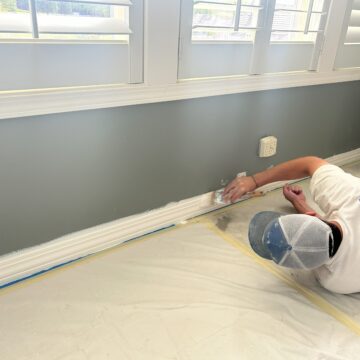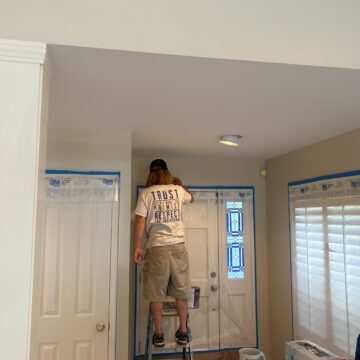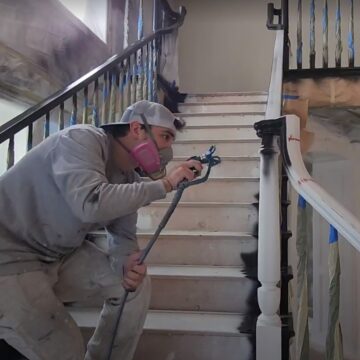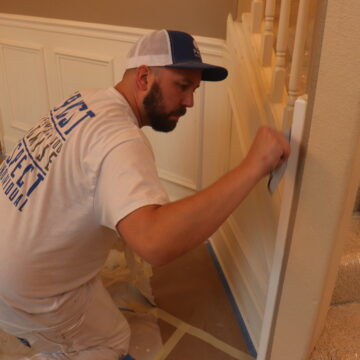When we talk about interior trim we’re referring to the decorative moldings and woodwork used to enhance and frame the architectural features inside your home. These elements include baseboards, crown molding, window casings, door casings, chair rails, and other similar features. Trim serves both an aesthetic and practical function, providing a finished look to rooms while also hiding joints and transitions between different materials and surfaces.
Choosing the right trim for your home involves more than just picking a style you like; it’s about balancing cost, durability, and aesthetics. The two main contenders for interior trim are MDF (Medium-Density Fiberboard) and real wood. Each has its own set of characteristics that make it better suited for different situations, so understanding these differences is key to making an informed decision.
And since we’re professional painters in the Portland, OR area, we have a unique perspective as we have encountered both MDF and wood trim in the home interiors that we have painted. We have been asked to paint both, so we’ll give advice on what to expect when painting trim.
MDF Trim:
MDF (Medium-Density Fiberboard) is a popular choice for trim because it offers a budget-friendly option without sacrificing the smooth, clean look that’s ideal for modern interiors. It’s a man-made material composed of wood fibers, wax, and resin, which are pressed together under high heat and pressure, creating a uniform surface that’s perfect for painting.
Unlike natural wood, MDF doesn’t have any grain, so you won’t have to worry about knots or other imperfections showing through the paint. This smooth surface is one of the biggest selling points of MDF, especially if you’re aiming for a flawless finish.
Installation is also generally easier with MDF. It’s lighter than wood and less prone to splintering, which can make it a bit more forgiving for DIYers. Plus, MDF is stable; it won’t expand or contract with humidity changes, which can be a big advantage in environments where the temperature or moisture levels fluctuate. However, MDF’s lower price point and ease of use come with some trade-offs. It’s less durable than wood, meaning it can dent or scratch more easily. It’s also sensitive to moisture, so it’s not the best choice for areas where direct contact with water is likely. This typically includes bathrooms, kitchens, windowsills and cabinet doors.
There are also repair challenges. If MDF gets damaged, particularly by moisture, it is difficult to repair. Unlike solid wood, which can be sanded down or patched more easily, swollen or damaged MDF often needs to be replaced entirely. For these reasons we recommend real wood, especially in areas where there is a moisture source.
One important consideration with MDF is its environmental impact. MDF is made with resins that can release formaldehyde, a VOC (volatile organic compound), which can affect indoor air quality. While the levels are generally low, it’s something to think about if you’re concerned about air quality in your home. It’s also a consideration if you’re aiming to make environmentally friendly choices.
Summary of Pros and Cons of MDF Trim
Pros
- Provides uniform surface, perfect for painting to get a flawless finish
- Easier to install than wood trim
- Less prone to splintering
- Lighter than wood trim
- Stable in temperature and moisture level fluctuations
Cons
- Sensitive to moisture (direct water contact)
- Less durable than wood
- Difficult to repair
- Negative environmental impact
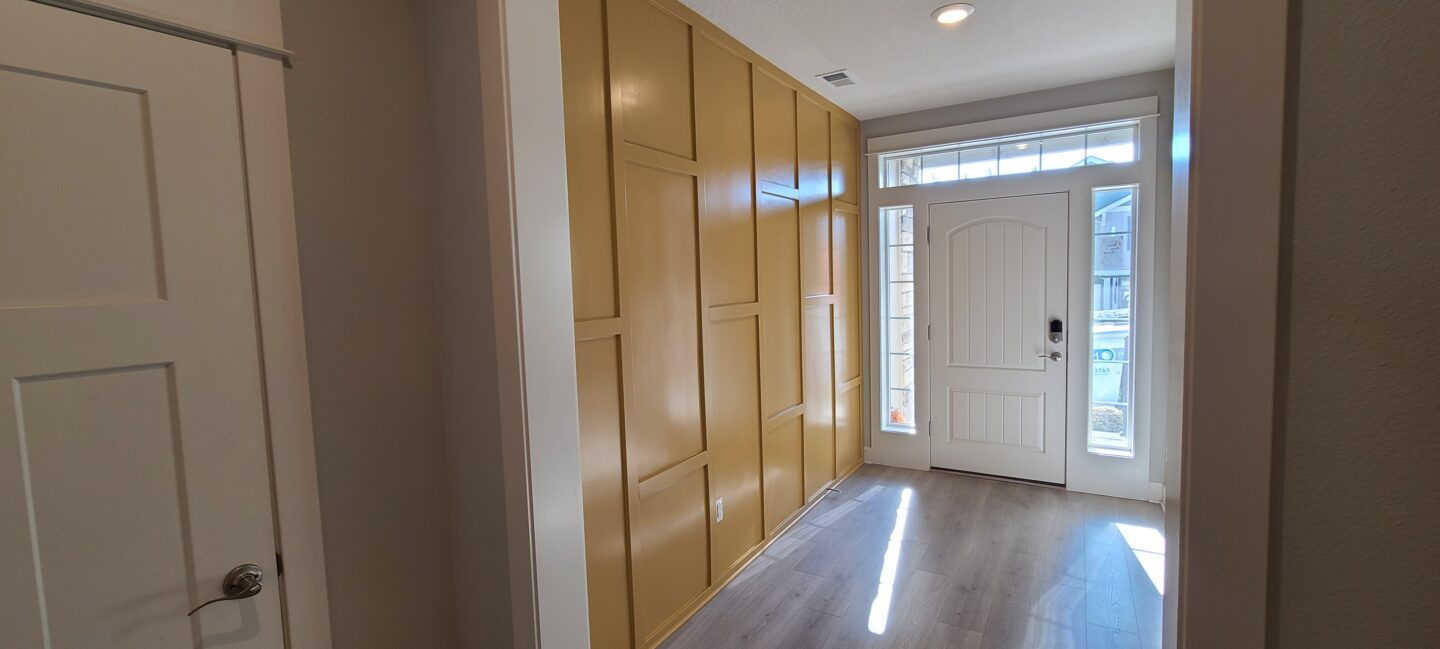
Real Wood Trim:
If durability and a natural aesthetic are at the top of your list, wood trim might be the way to go. Wood offers a richness and character that MDF simply can’t match. The natural grain of wood can add depth and warmth to a room, and you have the option to either stain it to highlight its natural beauty or paint it to match your decor. Real wood is also more resilient; it can withstand impacts better and can be sanded down and refinished if it gets damaged. This longevity makes wood a good investment if you’re looking for something that will stand the test of time.
However, wood trim requires more maintenance than MDF. Over time, it may need to be repainted or refinished, especially if it’s exposed to high traffic or fluctuating humidity levels. Wood can also be more challenging to work with during installation. It’s heavier and harder, which means you’ll need sharper tools and a bit more skill to get clean cuts and joints.
Cost is another factor. Wood is generally more expensive than MDF, so if you’re working within a tight budget, this might be a deciding factor. But for those who prioritize quality and are willing to invest in the upkeep, wood can be well worth the extra cost.
Summary of Pros and Cons of Real Wood Trim
Pros
- More durable than MDF
- Natural aesthetic and wood grain
- Resilient (withstands impact)
- Easier to repair (sand down and refinish)
- Likely to last longer than MDF due to its resiliency and ease to repair
Cons
- Requires more maintenance than MDF
- More challenging to install (heavier and harder than MDF)
- More expensive than MDF
Painting MDF vs. Wood Trim
When it comes to painting trim, the material you choose plays a significant role in the final look, but so does the paint and primer you use. Let’s delve into how MDF and wood perform under a coat of paint and which products can help you achieve the best results.
Painting MDF Trim:
MDF is often the go-to choice for homeowners aiming for a sleek, modern aesthetic. Its uniform surface takes paint exceptionally well, resulting in a smooth, even finish that’s difficult to achieve with wood. If your goal is a flawless, contemporary look, MDF makes it easy to achieve that polished outcome. Because MDF has no grain, you won’t have to worry about any imperfections showing through, making it ideal for those who prefer a clean, minimalist style.
Painting Real Wood Trim:
While MDF shines in its smoothness, wood trim offers a different kind of beauty when painted. The natural grain of wood adds texture and depth, creating a more nuanced finish. When painted, wood trim still allows some of its natural character to show through, which can add a layer of richness and warmth to a space. This makes wood a perfect choice for traditional or rustic interiors where you want the trim to complement other natural elements in the room.
Paint and Primer Recommendations for Trim
To get the most out of your trim—whether you choose MDF or wood—the right paint and primer are essential. Over the years, we’ve consistently found success with a few key products that deliver outstanding results across different materials.
Primer for Trim
For priming, Zinsser Oil Cover Stain is a top contender. This oil-based primer adheres well to both MDF and wood, offering excellent stain-blocking capabilities. It’s especially useful for wood, as it prevents knots and tannins from seeping through the topcoat, ensuring a clean, professional finish.
Another solid choice is Cloverdale Oil Speed Prime. This primer is known for its quick-drying properties and superior sealing ability, making it particularly effective on wood surfaces. It provides a smooth, even base that sets the stage for a flawless paint job.
Paint for Trim
When it comes to the topcoat, Cloverdale Renaissance is a premium interior paint that stands out for its durability and refined appearance. Available in satin, semi-gloss, and high-gloss finishes, it’s well-suited for trim work where a polished, professional look is desired.
Another excellent option is Benjamin Moore Advance, a waterborne alkyd paint that combines the durability of oil-based paint with the ease of water-based application. It’s particularly appreciated for its self-leveling properties, which help to minimize brush marks and create a smooth, even finish that enhances the beauty of both MDF and wood trim.
By pairing the right trim material with high-quality paints and primers, you can achieve a finish that not only looks stunning but also stands the test of time. Whether you opt for the sleek uniformity of MDF or the rich texture of wood, the end result will reflect the care and consideration you put into your choice.
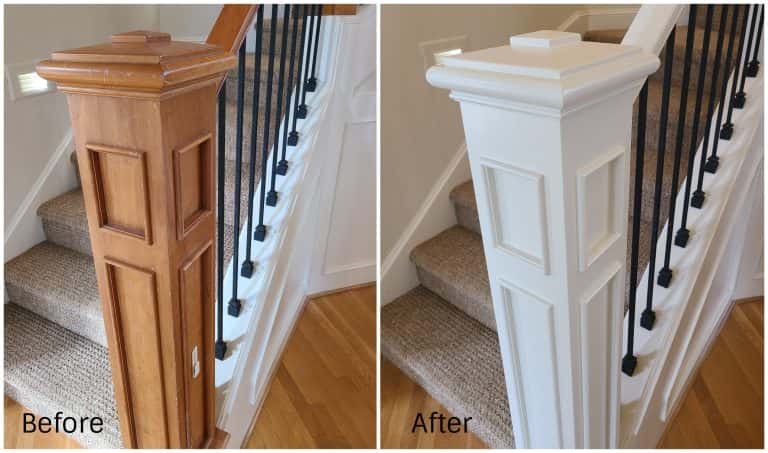
If you’re thinking about refreshing your interior trim or have any other painting projects on your mind, why not schedule a free consultation with Pearl Painters? Our team is here to help you bring your vision to life with a personalized plan tailored to your style and budget.



